Insight: How the opposition will tackle the SNP's dominance in May's elections
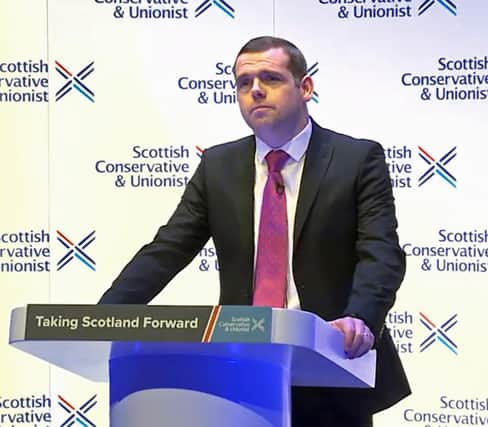

In reality though, Scotland – as with the rest of the UK – feels on the verge of its next major political era, one defined by the aftermath of Covid-19 and Brexit in the same way the post-war era was defined by the requirement to rebuild.
Which road the country chooses will be down to the direction in which it votes in May – assuming the election goes ahead as planned – and while the headline choice is either independence or the status quo, the reality is that the former is not yet on the table and the latter no longer acceptable to the electorate.
Advertisement
Hide AdAdvertisement
Hide AdIncumbents the SNP look strong on the face of it – multiple polls have them riding high and set for a majority and few claim that is not the most likely outcome – but look closer and the party is tainted and weakened by vicious infighting and a malaise one would expect from 14 years in government.
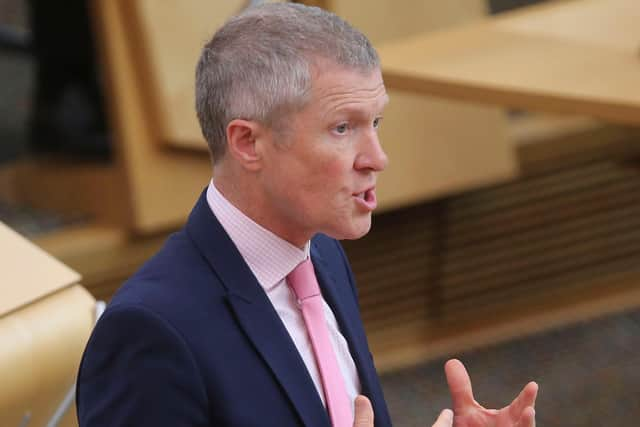

Nicola Sturgeon’s party will focus squarely on independence and push the view it can be used as a vector of recovery from the pandemic, an independent Scotland would be the opportunity for a new and different Scotland, but few internally have a clear plan on what that would look like.
The SNP winning a majority and IndyRef2 feels inevitable with election right around the corner, but this election will be like no other.
Covid-19 will render it devoid of on-street canvassing and run largely online through the destructive prism of social media.
It is likely to be highly-charged, with any subject of debate subject to polarisation across constitutional lines and likely twinned with an unedifying weaponisation of the Covid-19 pandemic and the deaths tragically lost because of it.
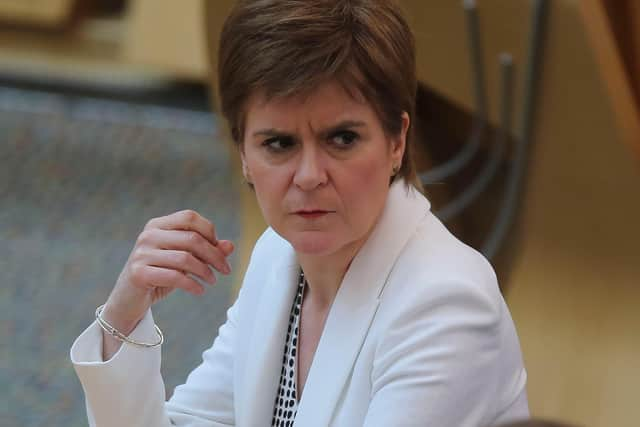

Such an approach will likely favour those at the fringes of Scottish debate, and those most comfortable shouting about flags and Section 30.
It also paints a challenging picture for opposition and it is a damning indictment of the failure of all unionist opposition parties to construct a coherent response to the SNP that in 14 years, seven Scottish Labour leaders, three Scottish Conservative leaders, and two Scottish Liberal Democrat leaders have been dispatched by the SNP.
The only other independence supporting party, the Scottish Greens, have meanwhile grown in stature and in cohort size, with Patrick Harvie a rare survivor of 13 of the 14 years of SNP rule as Green co-leader or co-convener.
Advertisement
Hide AdAdvertisement
Hide AdIn contrast and on the assumption Nicola Sturgeon will survive her very public battle with her predecessor over her government’s handling of harassment complaints against him, the opposition will also face a formidable politician at the peak of her powers.
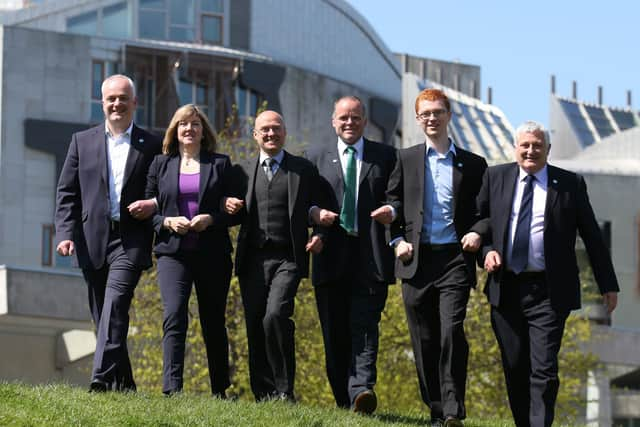

Cautious she may well be, but the leader of the SNP remains the most likely person in the independence movement to have enough public support to secure a second referendum, and is by far the most probable to take the Scottish people into that new era.
An expert communicator and exponent of compassionate language has seen the First Minister’s stock rise during Covid-19 to previously unseen heights.
But, there is no such thing as a sure thing in politics.
While the likelihood of any Scottish newspaper reprising the role of the Chicago Tribune and mistakenly proclaiming victory for Ms Sturgeon is slim, in politics there is always a chance for an upset.
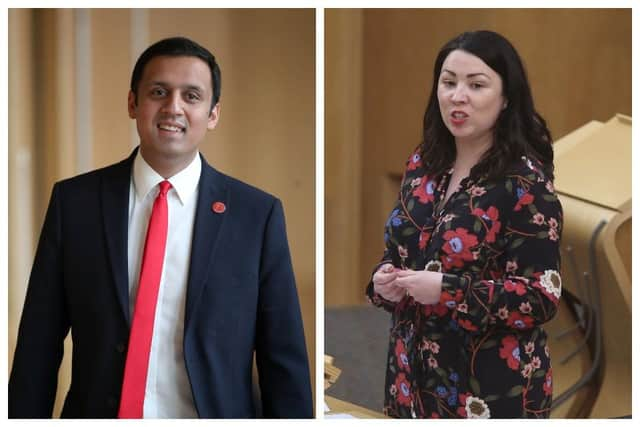

As it stands, the picture is bleak for those wishing to see a colour other than yellow dominating Holyrood come May 7.
Less than three months out from polling day, we investigate each opposition party’s election strategy as they are finalised in the hope of halting the charge of the SNP.
******
The Scottish Conservatives are in a transition period. In football, the leadership of Ruth Davidson in Holyrood would be that of a caretaker manager – an old favourite set to retire drafted in as a stop-gap for the new coach waiting for the end of the season.
The party has a leader in Douglas Ross that is still a relative unknown amongst the Scottish electorate and whose opinions and approach is still largely opaque, and central to their campaign will be increasing his profile.
Advertisement
Hide AdAdvertisement
Hide AdPlans to promote Ross as a family man and the Scottish Conservatives as distinct from their Westminster counterparts are already well underway.
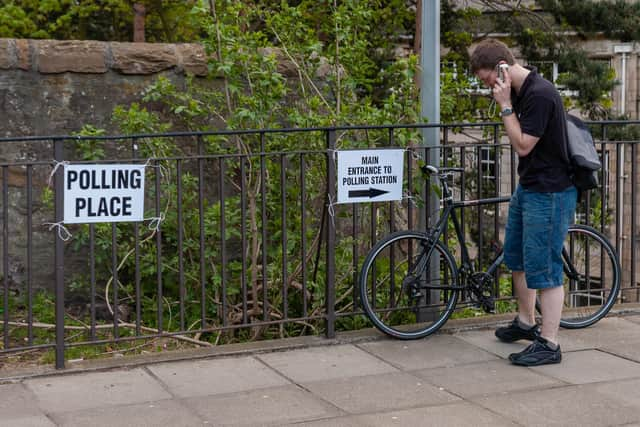

One senior party source said the election will see Ross’ profile improve as he impresses in debates, something the party is quietly confident on, and added that he is an improvement on Jackson Carlaw who struggled to cut through with voters.
Ross, they said, was already being viewed more positively than his predecessor, and there are hopes this will continue.
There is a belief that the ‘pragmatic unionist’ messaging and strategy of 2016 which won Davidson many admirers can be repeated, with Ross expected to distance himself from the electoral lead weight of Boris Johnson and pitch himself as the man best placed to save the union.
On policy, there is a stark acceptance that domestic issues, while important, will not win the votes of those the party is targeting.
Instead, strategy will focus on the regional list, targeting soft and hard unionist supporting voters from other opposition parties and attempting to convince them that only the Scottish Conservatives can stop IndyRef2.
This could lead to some surprises in constituencies given no additional funding or resource is being sent to those standing in marginals, but the argument is that a strongly unionist, list-based campaign will dismiss the threat of the floundering Labour party.
It is also in contrast to what some Conservative politicians have said in public, with Adam Tomkins telling Holyrood magazine this week that “the nature of the opposition’s failure is that the Scottish political conversation has not been resolutely focused on issues of domestic policy.”
Advertisement
Hide AdAdvertisement
Hide AdOne party source said: “For a large group of people, it [independence] is the issue. It is the fundamental issue. A lot of voters in the middle may not want to hear it but we have a nationalist government that has been in power for 14 years so it is impossible to ignore.
"As champions of the union, we can’t not be saying ‘No to IndyRef2’.”
Another senior party source said: “You are either a separatist or a unionist. If you are a unionist then we could pick up your vote. This is the best way of us winning votes and securing our position.”
They added that what is cutting through with voters is the threat of a second referendum and the potential for a ‘wildcat’ referendum, despite the pandemic.
“We are talking about it because the SNP are talking about it,” a source said, “if the SNP did not say they wanted a referendum this year, it would not play as big a part.”
The plan is to make the unionist case in a more nuanced way, with focus on a requirement to build Scotland back better following the pandemic.
Miles Briggs, the party’s chief whip, said: “We have positive things to say about rebuilding Scotland after the pandemic and restoring our schools after 14 years of SNP failures.
"But no matter what we say, the nationalists will always put separation at the heart of everything they do.
Advertisement
Hide AdAdvertisement
Hide Ad"Even a global pandemic has not put a brake on their obsessions with ripping Scotland out of the United Kingdom.
"Voters understand that we are the only party with the strength across Scotland to stand up to the SNP and block another destructive referendum."
One source added: “There has been an admission within the party that you need to develop our party beyond No to IndyRef2.
"We need to take our message further and that is by ‘rebuilding Scotland’. We want to get back to concentrating on domestic issues and here is where we can get stronger.”
The offer to the Scottish Labour leadership candidates to form a ‘unionist alliance’ was also a blatant political trap, a senior party source added.
"We did not think they would fall for it,” they said. “We will use it to show that they are not serious about the union and they only care about petty party politics.”
The strategy – taking soft unionists and convincing them that the Conservatives are the best hope for unionists – is not new, but it has been streamlined.
Canvassers will focus on areas where the party may not have a chance in the constituency, but where voters feel they could lend their vote on the list.
Advertisement
Hide AdAdvertisement
Hide AdBy focusing on the list vote and hoping for an ‘I agree with Douglas’ effect from debates, the Tories believe that while 40 per cent of the electorate is pro-independence and out of reach, the rest of the electorate is very much up for grabs.
******
Scottish Labour are under attack from all sides ahead of the Holyrood election in May.
The SNP and Greens see soft independence supporting Labour voters as a booster for their growing support, while both the Scottish Conservatives and Scottish Liberal Democrats believe they can fill the void left by years of Corbynism and dithering on the constitution.
The size of the mountain for either Monica Lennon or Anas Sarwar to climb is as big as any political challenge in Scotland, and as rival parties dismiss their chances, where Labour can progress and build on their disappointing 2016 result is an unknown.
Labour do have a remarkably resilient base of support with recent polls showing that the party is regularly on par with the Scottish Conservatives on classic domestic issues such as education, the NHS and living standards.
Their main problem is a failure to win and retain younger voters who have switched in their droves to the SNP, taking their vote and the control of Holyrood with them in recent years.
Ultimately, election strategy will depend on the winner of the leadership election, due to announce its victor next weekend.
Anas Sarwar said that if he emerges as the successor to the nice-but-unknown Richard Leonard, he will “focus on what unites us” going into May.
Advertisement
Hide AdAdvertisement
Hide AdHe said: “I have been clear what my strategy will be if I am elected leader: a laser-like focus on recovery; not the arguments of the past.
“Despite the inequalities and injustices that Covid has exposed, this global pandemic has brought our communities together.
“So we now face a choice: do we go back to the old divisions; or do we work even harder to bring people together? I choose to focus on what unites us.
“True leadership is to seek to heal the wounds in our country, reunite our people, and rebuild our nation.
“That will be my focus if I have the opportunity to lead our party into this election.”
Monica Lennon, the favoured candidate of the Labour left said domestic policies rooted in ending poverty and improving the NHS would be how she would lead the party into the Holyrood elections.
She said: “Getting Scotland through the pandemic is the top priority. The vaccine rollout is a cause for hope, however, a stronger public health response is needed.
“Too many people are still not getting the right financial support when they need to self-isolate and frontline workers need better PPE.
Advertisement
Hide AdAdvertisement
Hide Ad“Covid may have thrown us all into the same storm but we are not all in the same boat.
“A People’s Recovery from the virus and austerity must tackle stubborn wealth and health inequalities.”
Regardless of who wins the leadership, the key to a successful campaign for Labour is “simplicity”, former head strategist of the Better Together campaign and Labour activist Blair McDougall claims.
“There will be few opportunities to speak to people not least because of Covid. It is going to continue to be the main news item,” he said.
"What Labour should be thinking about is how do you reach that significant number of voters who are the centre ground of Scottish politics.
"These are people who do not live and breathe constitutional politics. It is how do you communicate to them a message that is not a rehash of the constitutional argument but does say there are bigger priorities.”
McDougall also believes Labour will – with the right leader in place which he believes to be Sarwar – also benefit from a Tory party without Ruth Davidson at the helm and which has "lost some of the moral authority because of Brexit”.
He said: “We have an opportunity to hoover up that centre ground vote. Scottish Politics should be about making things better and not returning to the arguments of old.
Advertisement
Hide AdAdvertisement
Hide Ad“Labour have got to explain why the Conservatives are not the answer while still explaining to people who are between Labour and the SNP why they should support the Labour Party.
"There is a very strong argument that the return to the constitution is a distraction to the issues of focusing on recovery.
"We have got to be able to find a way to link them together and navigate them. You are not just having the constitutional argument but you are explaining and narrating to voters that you have two parties that want you to be arguing about flags and identity because they want you to be mad about the wrong thing.
"They don’t want you looking at what they are doing in government.”
For Scottish Labour to be be in a stronger position going into 2026, Mr McDougall added that the key is to get new talent elected and develop it so that the party is in a position where it looks like it could govern at the next election.
In reality, it will likely be a battle to hold onto the coattails of the Conservatives and consolidation of third place.
******
The Scottish Greens meanwhile have their sights firmly on Scottish Labour and third place with leader Lorna Slater telling The Scotsman in January that the party will “see the whites of their eyes” in their attempts to secure a record number of MSPs.
The party, disparagingly referred to by some as the SNP's little brother or the ‘gardening wing’ of the dominant nationalists, have in the last five years gained more exposure and critically are beginning to be viewed as a serious alternative.
Advertisement
Hide AdAdvertisement
Hide AdThere are plenty of cautionary tales – the experience of Ireland's Green party which has had a torrid time in coalition with traditional parties – but the experience of the Scottish Greens in their confidence and supply relationship with the SNP has been broadly positive.
Highlighted as policy wins include the reform of income tax, the eviction ban over the winter of the pandemic, and the successful pressure on the Scottish Government to force a u-turn around the exams results scandal in August.
A clear vision, through green and climate-tinted glasses, alongside that record of delivering policy is what the Greens believe will see voters continue to view them as a serious independence supporting alternative to the SNP.
"The Greens are the only opposition party who have got anything delivered from their manifesto,” a senior party source said, “we need to make voters aware of that.”
"You can’t accuse a party of being ‘student politics’ if they are delivering.”
In the past, the party has tended to succeed on delivering more “intellectual” policies, but their experience of the pandemic will allow them to point to easily understood, direct-impact victories.
They are also planning to focus on the list and will target disenfranchised Labour voters and more progressive, left-wing independence supporters, hoping for many who may vote SNP in constituencies to lend their vote.
Strong and pragmatic on the climate emergency, focusing on what can be done now rather than banking on unavailable future technology, is also the bedrock of the Greens’ approach.
Advertisement
Hide AdAdvertisement
Hide AdThis will be embedded in messaging around recovering from one disaster – the pandemic – and trying to avoid another in climate change, while saying independence is the best way to do both.
A senior party source said: “Absolutely the first priority in the context of this election is the huge damage the pandemic has caused. How do we best recover from this and build a better Scotland out of it?
"Some of that discussion is about independence and we are not going to shy away from that. There is no danger of us putting that on the back-burner.
"It is about what kind of Scotland we want, and people like the way that we have started building a better Scotland now rather than waiting until after independence.”
Ultimately, it is Scottish Labour who the Greens have placed a target on, with the most optimistic hope being to dislodge the former dominant force from third.
Ross Greer, the Green MSP for West Scotland said: “The key for us is to be a fully national party and win a seat in each region.
"If we can go into this election talking about who is going to finish third, us or Labour, we could be on the verge of the death of Labour as a serious political force in Scotland.
"If we were to come third, that would be massively significant for us but also an era defining moment"
******
Advertisement
Hide AdAdvertisement
Hide AdNot since 2007 have the Scottish Liberal Democrats reached double figures in a Scottish Parliamentary election, but going into 2021 the belief that there is a vacuum in the centre ground of Scottish politics has provided the party with a belief that may change.
Under Willie Rennie, a well-liked leader but one who lacks a vote-winning personality of the Nick Clegg mould, the party has seen the least amount of chaos within the unionist stable.
The internal view is that the party is well-understood to be pro-union but must do more to be viewed as a legitimate alternative to the hard Brexiteer Conservatives and the stumbling Labour party.
Aiming for voters in the "progressive centre ground” will be the primary aspect of the party’s campaign.
Alex Cole-Hamilton, one of the party’s highest profile MSPs, believes the Brexit project from the Conservatives will allow the party to present the Tories as ushering in the main threat to the union, rather than being the champions of it.
Labour, meanwhile, are left of centre, leaving a gap in the middle the Liberal Democrats believe they can fill while leaning on their strength within local government..
He said: “It is very difficult to pick up our strengths in the polls. In our phone conversations, people really appreciate the service Liberal Democrat teams provide.
"We work as a team really effectively together and people want to keep getting that service.”
Advertisement
Hide AdAdvertisement
Hide AdIt may well come down to a handful of votes in each region, but there is cautious optimism the party could return to double figures.
Cole-Hamilton one of the most high profile MSPs of the party, faces an uphill battle to re-win Edinburgh West, but the belief is that in a straight fight with the SNP, as many as four or five constituency seats are up for grabs.
North East Fife, Caithness, Sutherland and Easter Ross, Orkney, Shetland and Mr Cole-Hamilton’s seat are all viewed as winnable.
Alistair Carmichael, the party’s campaign chair and MP for Orkney and Shetland, agreed that the “forgotten middle” was who the party is targeting and that voters are attracted by parties not consumed by a “constitutional fetish”.
He added the party will focus on a message that is applicable nationwide, not just in constituencies, in the hope to pick up those final couple of hundred votes to take them above the Greens in the list vote with growth the overall target.
Fundamentally, the party aims to take those fatigued by the SNP “fighting like rats in the sack” and by constitutional arguments or, in Labour’s case, a swing to the left.
The veteran MP said: “People know where we stand on IndyRef2 but that is not what we want to be talking about in this election. We think the focus needs to be on the economic recovery from Covid.
"That is a strong and attractive message. I think the Tories risk looking a bit like a one trick pony, and risk, by wanting to talk about the constitution, opening themselves up to attack because of their record on Brexit.
Advertisement
Hide AdAdvertisement
Hide Ad"There are people who were previously SNP voters who are up or grabs, and voters who lent their vote to the Tories in 2016 because they like the pragmatic approach and pro-UK message are also up for grabs.
"The 2016 Tory message has been absolutely trashed by Boris Johnson and Douglas Ross clearly understands that.”
Whether the occupation of the middle ground in a political sphere dominated by polarisation and the fringes of the debate will be successful will be a fascinating aspect of this election.
If there is a Liberal Democrat revival, it could point to an early shift away from the divisions that have dominated politics in recent years.
******
Recent polling has the SNP set for a clear one-party majority with their ceiling likely to be 71 seats and a 13-strong majority, and with support on the constituency list consistently above the 50 per cent mark, it would take a remarkable shift in public opinion for that to change.
Both the Scottish Conservatives and Scottish Labour are scrapping over second place, though Douglas Ross' party is ahead and averaging around 20 per cent of both the constituency and list vote, with Labour hovering more around the 17 per cent mark.
Unionist parties will have to focus more on the regional list where they are most likely to pick up the majority of their seats.
The Scottish Conservatives require at least 20 per cent for a successful election and a decent return of MSPs.
Advertisement
Hide AdAdvertisement
Hide AdIn reality, the party will hope to pick up a handful of constituencies and poll around 25 per cent to have successfully built upon the positives of 2016. Anything less is a step backwards for the largest pro-union party.
For Scottish Labour, 20 per cent of the list vote would constitute an unlikely success given the fact the Scottish Greens believe they can run the party close for third place.
They must halt the slide towards the bottom of the polls, but the party is hardly in a position of strength and simply retaining their numbers will be a minimum requirement for any leader.
Scottish Greens are consistently polling at ten to 12 per cent, with that likely to see the party reach double figures of MSPs for the first time.
Third is likely an unrealistic target but not impossible as a further collapse in the Labour vote in favour of the Greens on the list could spark a surprise.
However, given the nature of Holyrood’s more proportional additional member system, the Scottish Liberal Democrats, despite polling at around five or six per cent on both constituency and regional preferences, could sneak ahead into fourth if their turnout is strong.
Given the fact the election is months away, much could still change and in politics, it often does.
A message from the Editor:
Thank you for reading this article. We're more reliant on your support than ever as the shift in consumer habits brought about by coronavirus impacts our advertisers.
If you haven't already, please consider supporting our trusted, fact-checked journalism by taking out a digital subscription.
Comments
Want to join the conversation? Please or to comment on this article.